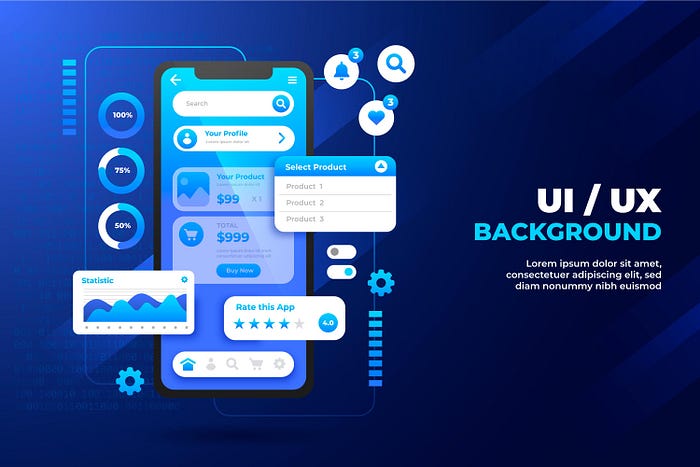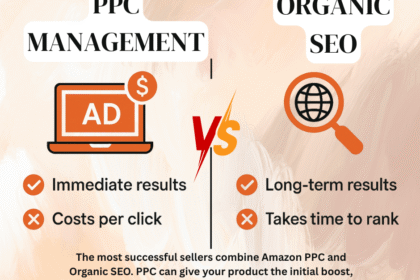
A mobile or web app may have incredible features, but if users struggle to navigate it, they’ll leave in seconds. That’s why UX UI app design plays a crucial role in making apps intuitive, enjoyable, and easy to use.
Seamless navigation isn’t just a design choice—it’s a key factor in improving user experience, boosting engagement, and increasing retention. In this blog, we’ll explore the best practices for creating smooth navigation in UX UI app design.
users expect mobile and web applications to be not only visually appealing but also easy to use. No matter how powerful or innovative an app is, if users struggle to navigate through it, they will likely abandon it and move to a competitor. This is why seamless navigation is one of the most critical aspects of UX UI design.
Good navigation creates a smooth journey for users — allowing them to move effortlessly between features, access content quickly, and accomplish their goals without confusion. In this blog, we’ll explore the best practices for designing intuitive app navigation that enhances usability, increases engagement, and ultimately contributes to business success.
Why Navigation Matters in UX UI Design
Navigation is the roadmap of any application. It’s the guiding system that shows users where they are, where they can go, and how they can get there. Poor navigation frustrates users, increases bounce rates, and damages the overall brand perception. On the other hand, seamless navigation:
-
Reduces cognitive load by making decisions simpler.
-
Improves task completion by helping users find features quickly.
-
Boosts retention as users prefer apps that are easy to explore.
-
Builds trust and credibility through a professional, user-centered approach.
In short, navigation isn’t just a design element — it’s the foundation of a successful app.
Best Practices for Seamless App Navigation
1. Keep It Simple and Intuitive
The golden rule of navigation design is simplicity. Users shouldn’t need a manual to figure out how your app works. Use familiar navigation patterns, such as bottom navigation bars, hamburger menus, or tab bars, so users instantly understand where to go.
Tip: Prioritize core features on the main navigation and move secondary actions into sub-menus. Overloading users with too many options upfront can lead to confusion.
2. Use Consistent Layouts and Icons
Consistency creates familiarity, and familiarity builds confidence. Use the same style of icons, button placements, and visual cues throughout the app. For example, if the search icon is at the top right corner in one section, it should remain there across the entire app.
Example: Instagram and Facebook maintain consistent navigation patterns, making it easy for users to know where to look, regardless of updates or added features.
3. Prioritize Mobile-First Navigation
With most users accessing apps via mobile devices, responsive and mobile-friendly navigation is a must. Large touch targets, easy-to-reach buttons, and adaptive layouts ensure usability across various screen sizes.
Tip: Place primary navigation elements within thumb reach, especially for one-handed use. This improves accessibility and reduces user frustration.
4. Provide Clear Visual Feedback
Users should always know where they are in an app. Highlight active states, use breadcrumbs, or add visual indicators to show which tab or page they are on. Visual feedback builds confidence by confirming that the system has responded to their actions.
Example: Spotify highlights the currently selected icon in its navigation bar, so users never feel lost.
5. Use a Logical Information Hierarchy
The way information is structured directly impacts how users move through an app. Organize content in a way that feels natural and predictable. Group related features together and create a clear flow from general to specific.
Tip: Follow the “three-click rule” — users should be able to access any feature within three taps or fewer.
6. Enhance Navigation With Search Functionality
Not every user wants to browse step by step. Some prefer to directly search for what they need. Adding a well-placed search bar with predictive text and filters enhances navigation, especially in content-heavy apps.
Example: E-commerce apps like Amazon rely heavily on powerful search to improve user satisfaction and sales conversions.
7. Design for Accessibility
Accessibility is a crucial part of UX design. Ensure your app navigation is usable for people with disabilities. This includes providing high-contrast colors, voice navigation support, screen reader compatibility, and properly labeled icons.
Tip: Following WCAG (Web Content Accessibility Guidelines) ensures inclusivity, which not only improves user experience but also broadens your app’s audience.
8. Minimize User Effort
The less effort required, the better the experience. Use auto-fill forms, one-click actions, and shortcuts to streamline navigation. Anticipate user needs and design flows that minimize repetitive steps.
Example: Ride-hailing apps like Uber save frequently used addresses, reducing the effort needed to book a ride.
9. Test and Iterate Continuously
Designing seamless navigation isn’t a one-time task — it’s an ongoing process. Regular usability testing, heatmaps, and user feedback help identify friction points in navigation. By iterating and refining, designers can keep the app aligned with evolving user behaviors.
Tip: Conduct A/B testing on different navigation layouts to discover what works best for your audience.
Common Navigation Mistakes to Avoid
-
Overcomplicating menus with too many options.
-
Hiding essential features deep within layers.
-
Using unfamiliar icons without labels.
-
Ignoring mobile ergonomics like thumb reach.
-
Failing to provide feedback after user actions.
Avoiding these pitfalls ensures a smooth, frustration-free experience for users.
Future Trends in App Navigation
As technology evolves, so does navigation design. Here are a few emerging trends to watch:
-
Voice navigation: Hands-free interaction using AI assistants.
-
Gesture-based navigation: Swipes and taps replacing buttons.
-
Context-aware navigation: Personalized menus based on user behavior.
-
AI-driven search: Smarter, predictive search experiences.
Adopting these innovations can give apps a competitive edge and enhance long-term user engagement.
Conclusion
Seamless navigation is the cornerstone of great UX UI app design. It guides users effortlessly, reduces frustration, and creates a positive experience that keeps them coming back. By following best practices like simplicity, consistency, mobile-first design, and accessibility, businesses can build apps that are not just functional but also enjoyable to use.
In the competitive digital landscape, where user attention spans are shorter than ever, smooth navigation can be the difference between an app’s success and failure. Investing in thoughtful UX UI design is, therefore, not just an option — it’s a necessity for creating apps that truly resonate with users.




